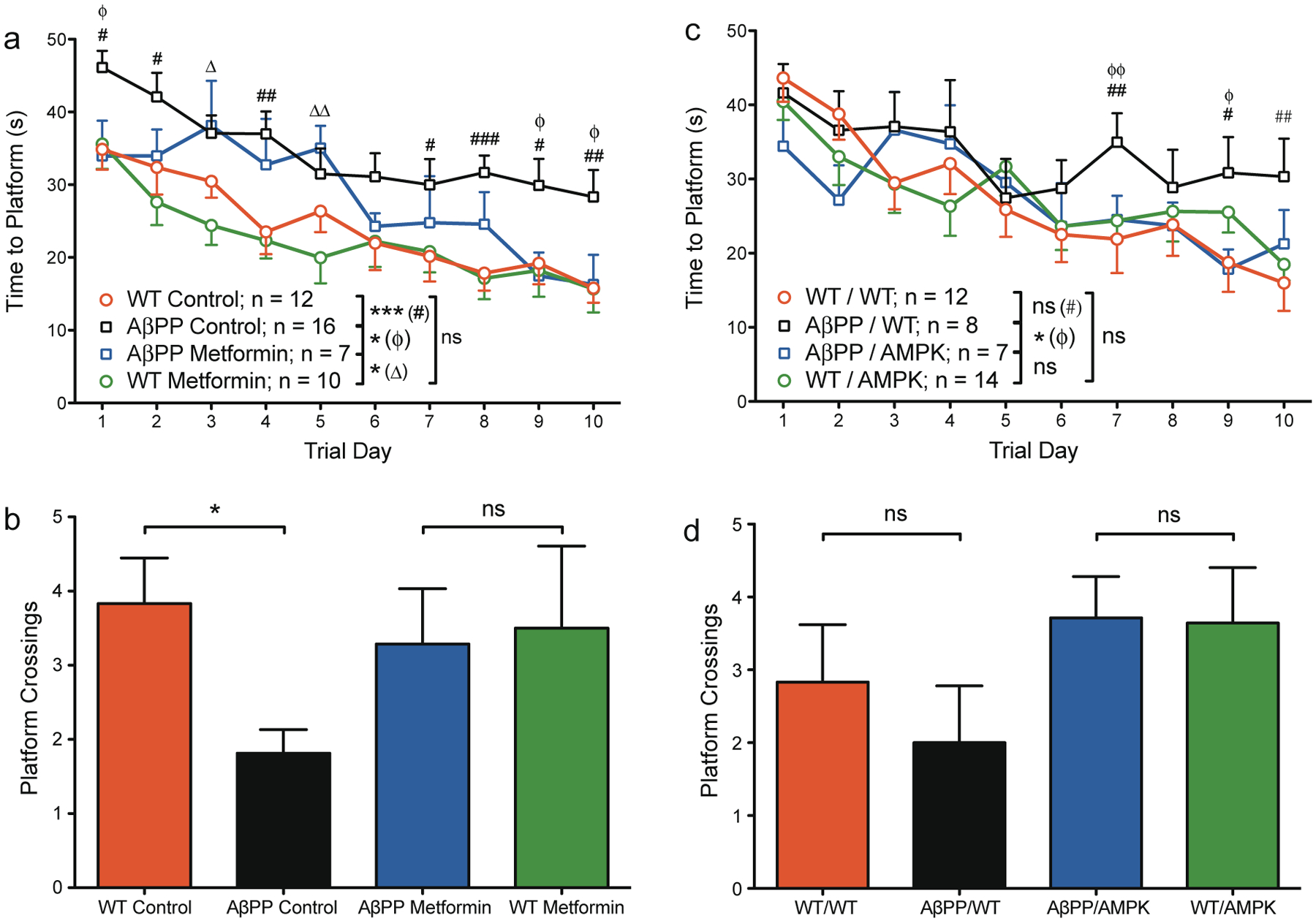Fig. 2.

AMPK activation improves learning and memory function in female AβPP mice. 12- to 14-month old mice received four trials per day for 10 days of training to find a hidden platform in the Morris water maze followed by a single probe trial on the final day of testing in which the platform was removed. a, b) Metformin study: a) Training phase: female AβPP mice had longer latencies to find the escape platform than WT mice in the control group. Within the metformin-treated groups, AβPP mice took longer to find the platform in the early days of testing; however, metformin-treated AβPP mice were significantly improved over control-treated AβPP mice. b) Probe trial: within the control treatment group, AβPP mice crossed the platform location fewer times than WT mice. AβPP mice in the metformin treatment group, however, were indistinguishable from WT mice. c, d) AMPK study: c) Training phase: female AβPP/WT mice had longer latencies to find the escape platform than WT/WT mice in the later part of training. AβPP/AMPK mice were significantly improved over AβPP/WT mice and were in fact statistically indistinguishable from WT/AMPK mice. d) Probe trial: by the measure of platform crossings, AβPP/WT mice performed poorly, but were not statistically different from WT/WT mice (by time spent in the target quadrant, these groups were distinguishable, see Supplementary Figure 1). AβPP/AMPK mice demonstrated no memory impairment. For the hidden platform (a, c): data represent the average latencies for four trials for the mice in each group to locate the escape platform; error bars represent SEM; ns, not significant; asterisks in the reference legend of each graph represent significance of the entire curve by repeated measures ANOVA: *p < 0.05, **p < 0.01, ***p < 0.001; symbols on the graph represent significance of individual points on the curve: #WT control versus AβPP control; ϕAβPP control versus AβPP metformin; #,ϕp < 0.05, ##,ϕϕp < 0.01, ###p < 0.001. For the probe trial (b, d): data represent the average number of times the mice in each group crossed the area where the platform had previously been located; error bars represent SEM; ns, not significant; *p < 0.05. Sample sizes are identical to the training phase.
